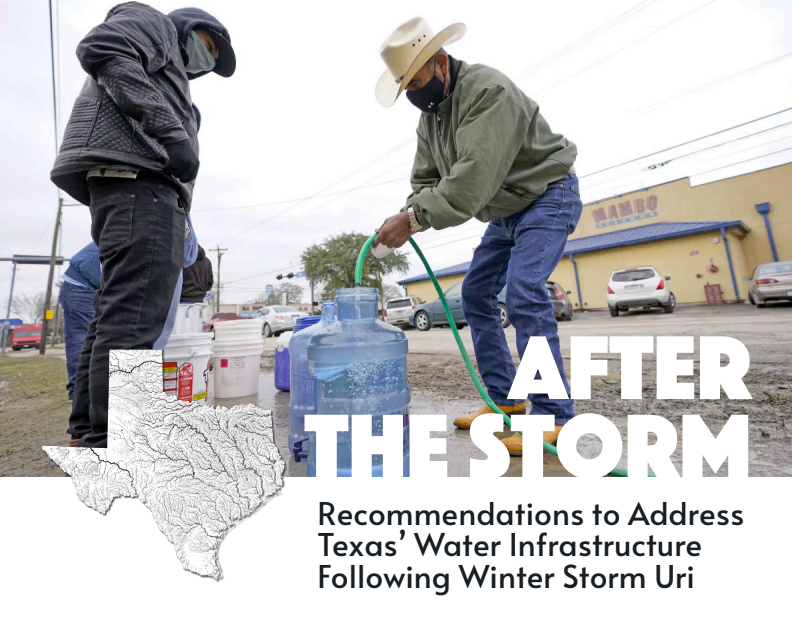
Download the Post-Winter Storm Debfrief as a PDF. This report was developed by the Lone Star Chapter of Sierra Club, Environmental Defense Fund, National Wildlife Federation, Galveston Bay Foundation, and Hill Country Alliance
The polar vortex that descended on Texas from February 13 to 17, 2021 exposed not only the state’s ill-prepared electric grid, but also our aging, inadequate water infrastructure. More than half the state’s population was without potable water in the aftermath of Winter Storm Uri. As of March 8, three weeks after the onset of the storm, 38 public water systems in 31 counties were still issuing boil water notices according to the Texas Commission on Environmental Quality.
While Texans in every part of the state directly experienced the cascading and compounding effects that electric grid failures had on our water supply, this wasn’t simply a power problem. Many of the issues afflicting Texans are a direct result of aging water infrastructure. They demonstrate the challenges we will continue to face without systematically addressing and investing in water solutions.
Consistent with long-running systemic housing, income, and public infrastructure inequities, Winter Storm Uri had a disproportionate impact on Texas’ most under-served communities. It laid bare the uneven impact of the state’s intensifying climate extremes.
Underlining the inadequacies of our water system, the American Society of Civil Engineers released their Texas Infrastructure Report Card three days before the storm, grading the state’s drinking water infrastructure (C-) even lower than its energy grid (B+). This is a chilling analysis, given the state’s infrastructure failures during the storm and its implications for the future.
As the Texas Legislature, state agencies, and local communities examine and address the failures that led to widespread suffering, loss of life, and economic harm during this winter storm and its aftermath, we urge you to consider how we might approach our water infrastructure differently as well.
Recommendations
We offer the following high-level policy recommendations to help ensure that all Texans have reliable access to safe drinking water, that their wastewater is properly treated, that the systems providing these essential services can quickly recover from shocks and stresses, and that our water utilities are equipped to adapt and grow from disruptive events.
- Investigate the state of our water infrastructure to identify areas in need of improvement and make recommendations for future investments, emphasizing both physical and social vulnerability.
- Integrate future climate projections and associated uncertainties—addressing low probability but highly consequential events like Uri, based on the best available scientific data and modeling—into infrastructure planning, design, and operations at the state and local levels, including hazard mitigation plans, local risk assessments, the state water and flood planning.
- Prioritize and incentivize smart investments in water infrastructure, including grants for non-capital work such as planning, that efficiently use existing state funds and draw down federal funds.
- Designate public water supply as critical infrastructure, so that running water is reliable during controlled energy blackouts.
- Increase investments in, and community assistance for, federal funds to weatherize houses, with priority given to low-to-moderate income areas.
- Make additional investments in water infrastructure so that utility operators have the resources needed to protect pipes and machinery from extreme weather events.
- Prioritize investments in onsite water reuse, decentralized water systems, and green and nature based infrastructure as innovative solutions to water reliability at the local and household level.
- Explore how water providers and the state can provide better and more coordinated communications about the status of residents’ water during a disaster.
- Double down on efforts to promote water conservation through common-sense measures like outdoor watering ordinances and enforcement, water appliance standards, and curb water loss through investments in infrastructure repair and necessary upgrades
- Increase inspection and enforcement of existing building codes and explore giving counties authority to regulate standards to regulate new construction.